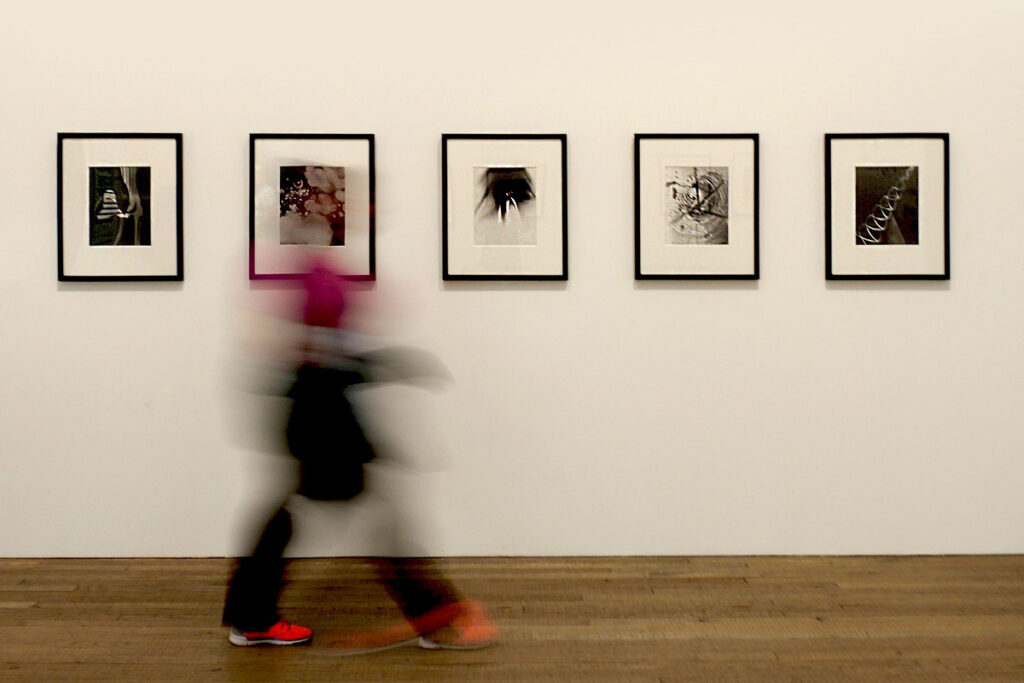In the heart of Manchester Art Gallery, a unique initiative called “Room to Breathe” is transforming the way visitors experience art. This quiet, dark green room houses just three paintings, creating a tranquil environment aimed at combating the modern epidemic of shortened attention spans and high stress levels. Visitors are guided through a mindful art-viewing process, which encourages them to spend up to 15 minutes focusing on a single artwork.
The initiative is part of the broader Mindful Museum Campaign, pioneered by museum consultant Louise Thompson. Her work over the past 12 years has redefined museums as spaces not only for exhibits but also for mental well-being. The campaign promotes the idea that museums can foster social connection, boost self-esteem through learning, and create moments of mindfulness by encouraging visitors to be present.
At its core, “Room to Breathe” aims to slow down the fast pace of modern life. In this space, visitors engage with art in a deeper, more meaningful way by observing details, noticing patterns, and appreciating the subtle beauty often overlooked in a typical gallery setting. The practice involves guided breathing exercises and meditative observations of shapes, colors, and styles.
Scientific research supports the initiative’s impact. In collaboration with Goldsmiths University, the campaign found that visitors in mindful settings reported lower stress levels and increased engagement compared to traditional gallery spaces. Physically, participants appeared more relaxed, with noticeable changes in body language after just 10–15 minutes of focused art viewing.
This approach is gaining traction globally. The Van Gogh Museum in Amsterdam incorporated mindful art-viewing sessions as part of its “Open Up With Vincent” mental health program. These sessions, complemented by yoga and guided meditations, offered visitors an opportunity to explore the artist’s work and life through a calming lens. Similarly, the Museum of the Mind in Haarlem created its own version of “Room to Breathe,” while the Victoria Gallery & Museum in Liverpool developed mindfulness trails that encourage visitors to savor moments and discover exhibits with curiosity.
The benefits of mindful art viewing are not confined to organized programs. Visitors in any museum can replicate the experience by finding a quieter space, selecting an artwork, and observing it closely for 10–15 minutes. This practice allows individuals to immerse themselves in the details of the piece, fostering a sense of calm and clarity.
Beyond the walls of museums, the philosophy behind this approach has far-reaching implications. Slowing down to engage deeply with art, music, or writing encourages a richer, more meaningful appreciation of everyday life. This perspective can transform routine experiences into opportunities for mindfulness, improving mental health and overall well-being.
As the Mindful Museum Campaign continues to expand, it challenges traditional perceptions of museums and galleries. These spaces are increasingly seen as tools for personal growth and mental health support, rather than mere collections of historical objects or art. By encouraging visitors to adopt mindfulness skills, initiatives like “Room to Breathe” aim to enhance not only the museum experience but also everyday interactions with the world around us.
In a world dominated by fast-paced distractions, the mindful museum trend offers a much-needed antidote. It invites people to pause, observe, and reconnect—not only with art but with themselves. Whether in a dedicated mindfulness room or through personal practice, the simple act of noticing can profoundly impact how we engage with the world.
This innovative approach is redefining what museums can offer, making them spaces where visitors can regain focus, find calm, and leave with skills that extend far beyond the gallery.


